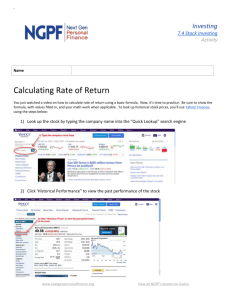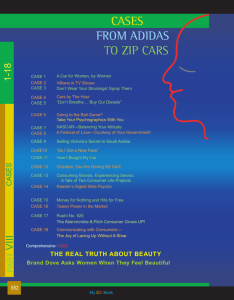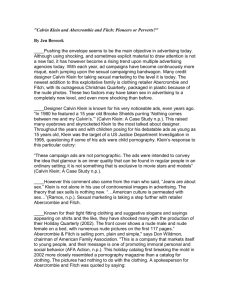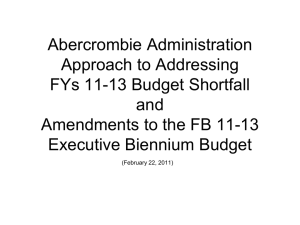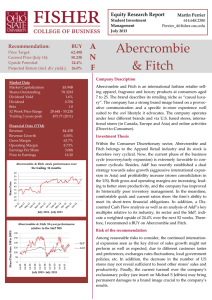Communicating Across Cultures
advertisement
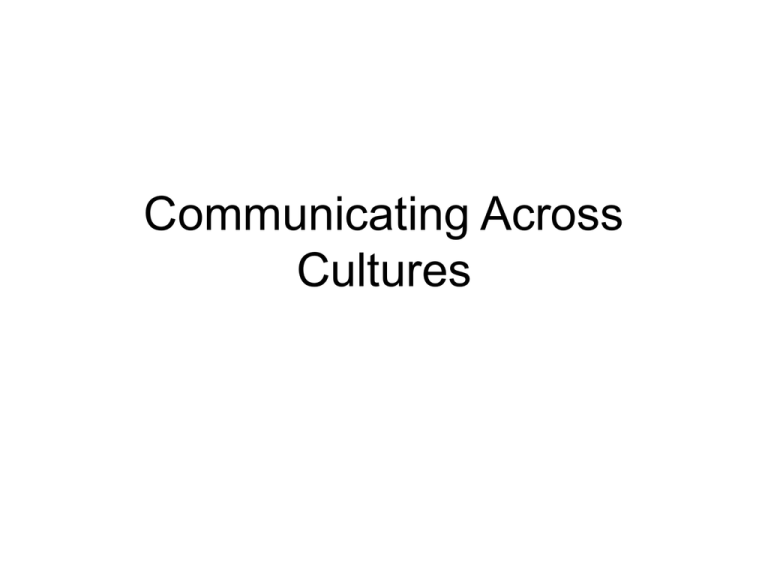
Communicating Across
Cultures
On April 18, 2002, the San Francisco Chronicle ran the following headline on the front
page, regarding the explosive new products launched by Abercrombie & Fitch:
"ABERCROMBIE & GLITCH
Asian Americans rip retailer for stereotypes on T-shirts“
Slogans on these T-shirts included:
"Wong Brothers Laundry Service -- Two Wongs Can Make It White."
"Abercrombie and Fitch Buddha Bash -- Get Your Buddha on the Floor"
Comment from representative of Abercrombie & Fitch
"We personally thought Asians would love this T-shirt," said Hampton Carney, with Paul
Wilmot Communications in New York, the public relations firm where Abercrombie referred a
reporter's call.
Objectives
• Define communication and list its four
functions
• Describe the communication process
• Contrast the three common types of smallgroup networks
• Identify factors affecting the use of the
grapevine
Objectives (cont.)
• Describe common barriers to effective
communication
• List four rules for improving cross-cultural
communication
• Outline behaviors associated with
providing effective feedback
• Identify the behaviors related to effective
active listening
Functions of Communication
• Control - both formal and informal
• Influence - clarification and feedback
• Emotional expression - fulfillment of social
needs
• Information - facilitating decision making
The Communication Process
Classification by Direction
• Downward
• Lateral
• Upward
Classification by Form
• Oral
• Written
• Non-verbal
Non-verbal Communication
Body movement - Body language adds to,
and often complicates, verbal
communication
• Intonations - Change the meaning of the
message
• Facial expression - Characteristics that
would never be communicated if you read
a transcript of what is said
• Physical distance - Proper spacing is
largely dependent cultural norms
Computer-Aided
Communication
• Electronic mail (e-mail)
• Videoconferencing
Communicating Emotion via E-mail
Symbol
Translation
Symbol
Translation
Symbol
Translation
: -)
smiley
face/happ
y
8-)
eye-glasses
:-|
indifference
:-e
disappoint
ment
:-P
wry smile
:-!
foot in mouth
:-&
tongue
tied
;-)
wink
:-O
yell
:-/
perplexed
:->
devilish grin
:-Q
smoker
:-{
mustache
:-
male
:-(
frown/sad
:-@
scream
;-}
leer
:-D
shock or surprise
C=:-)
chef
d:-)
baseball
smiley
>-
female
The Grapevine
• Not controlled by management
• Perceived as being more believable
and reliable
• Largely used to serve self-interest
• Appear in response to situations
– Important to us
– Where there is ambiguity
– Under conditions that arouse anxiety
Barriers to Effective
Communication
•
•
•
•
•
•
Filtering
Selective Perception
Information Overload
Gender Styles
Emotions
Language
High- vs. Low-Context Cultures
High
Context
Low
Context
•
•
•
•
•
•
•
•
•
•
•
•
Chinese
Korean
Vietnamese
Arab
Greek
Spanish
Italian
English
North American
Scandinavian
Swiss
German
Source: Based on the work of E.T. Hall from R.E. Dulck, J.S. Fielden, and J.S. Hill, “International Communication:
An Executive Primer,” Business Horizons, January-February 1991, p. 21.
A Cultural Guide
• Assume differences until similarity is
proved
• Emphasize description rather than
interpretation or evaluation
• Practice empathy
• Treat your interpretation as a working
hypothesis
Ethics in Cross Cultural
Communication
• What is a lie?
• What is humor?
Improving Active Listening Skills
1. Make eye contact
2. Exhibit affirmative head nods and
appropriate facial expressions
3. Avoid distracting actions or gestures
4. Ask questions
5. Paraphrase
6. Avoid interrupting the speaker
7. Do not over talk
Summary
• Defined communication
• Described the communication process
• Described common barriers to effective
communication
• Listed four rules for improving cross-cultural
communication
• Identified factors affecting the use of the
grapevine
• Identified the behaviors related to effective
active listening



